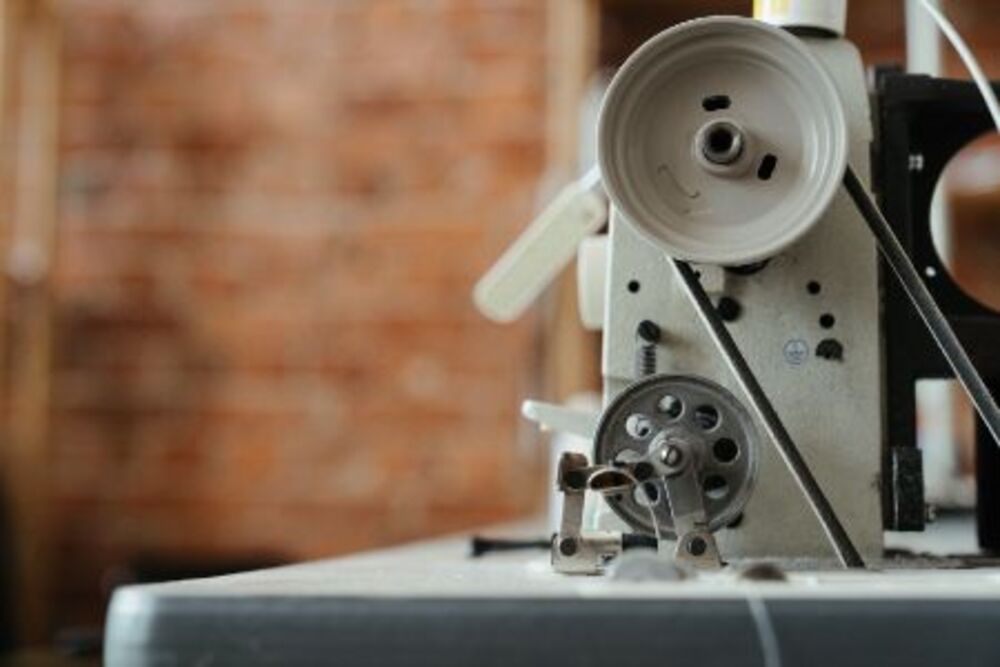There are many sewing machine techniques that can be helpful, regardless of whether you are a skilled seamstress or just starting out. These include matching threads and adjusting tension.
Add notches
It is important to add notches to your sewing machine techniques in order for your garments to look neat and polished. Notches help to guide your sewing along the seams and make it easier to match the fabric and the pattern pieces.
They can be single or two-sided and are used for many purposes. They are helpful in identifying front or back clothing, and they are also a good way to indicate the centre front, back or both. Look out for the best sewing and embroidery machine.
Notches are usually cut into the seam allowance of a piece of cloth. They are usually in the form of a diamond or a triangular shape. They are most commonly seen on commercial patterns and are a must when cutting out your own patterns.
To keep track of which seam allowances are applicable where, notches are helpful. They are also useful in ensuring that the fabric does not stretch or distort. They can be especially useful when assembling pieces that are made from different fabrics. They are most commonly used at the seams but can also be found at the edges.
When transferring notches from a paper pattern to a piece of fabric, you can use chalk or a removable fabric marker pen. However, you should not use a chalk marker to overlock the raw edge of a garment. A better alternative is to use scissors. Pinking shears are best suited for thinner fabrics.
Using notches during the construction process can be especially useful for novices. It is much easier to add notches after a piece of clothing has already been cut out than it is to add them to a half-sewn garment.
Depending on your fabric, you might want to try several different methods to achieve the best notches. A triangle notch is the most straightforward to cut and the most accurate. For very narrow seam allowances, an outward extension notch is the safest bet.
Tacking
Using tacking sewing machine techniques is a great way to hold two or more pieces of fabric together until they are sewn. You can also use taking to mark patterns before sewing, to temporarily hold fabric in its place, or to secure zippers or other tricky additions to clothing. It is an important part of clothing construction.
Tacking can be done by hand or by machine. If you’re using a machine to tack, ensure that the thread has a polyester content. This will protect the fabric from being damaged.
When tacking, use a specialized tacking thread that is easy to remove. You can also use a seam ripper to remove tacking stitches.
Tacking can be used to hold the seam in place if you are working with delicate or slippery fabrics. It may also be used to hold the trims and layers of clothing in place. You can also use it to secure a lining to a jacket or skirt. It can also be used to mark a corner of a pocket.
Tacking is also a good way to secure the ends of buttonholes or other openings. It can be removed easily by pulling the bobbin thread. It can be used in conjunction with pins, but you should be careful not to damage the fabric.
The best type of thread for tacking is soft cotton. For small clips, you can also use a safety pin with curved edges. For extra control, you can also use a threading needle. If you are using a machine, you will need to set the tension to a lower setting.
The tacking sewing machine technique can be used to sew a wide variety of fabrics. This technique is an alternative to machine quilting.
Matching threads
Using the right thread in sewing machine techniques is vital to the quality of your finished project. This will ensure that the seams are smooth and there are no skipped stitches or breakage. It’s also important to match the weight of the fabric to the weight of the thread.
The best way to choose the thread that’s right for you is to consider your projects and the materials used. You will want thread that is suitable for natural fiber fabrics such as cotton and synthetic blends such as polyester.
If you’re sewing with a fabric that’s patterned, you should base your thread choice on the background color. This is especially true for plaids and stripes.
You’ll also want to take into consideration the texture and properties of the fabric. It is impossible to choose a thread that is too coarse or too thick for your material. For example, silk thread is very thin, but it’s also elastic, making it ideal for applique work.
Choosing the right thread can be tricky, so make sure to do your research. It’s also a good idea to choose the same type of thread for your bobbins.
100% cotton thread, for example, will not heat up a hot iron. However, wool thread is not recommended to be used for delicate fabrics. This is because the thread’s fibers can easily fray. It is also not a good idea if you use too heavy thread as it can cause fabric to rip while you are sewing.
It is important to remember that your thread should match the color of the fabric. A lighter colored thread will stand out more, while a darker thread will blend in better.
Adjusting tension
Getting the right thread tension is crucial to sewing perfection. When you select the wrong tension, your stitches can be erratic or even jammed.
It is important to remember that every fabric has its own requirements when choosing the right tension. Some fabrics behave better when the tension is higher, while others can behave worse when the tension is low.
You can adjust the tension on a scrap piece of fabric to determine which tension is best. This should be done in small steps.
You can test the tension yourself to determine the best one. You can see the changes in your stitches as you adjust the tension by using a practice swatch. It is a good idea to keep a sample of your stitching next to your machine. A notepad can be used to record the tension of each fabric.
You might have noticed your bobbin is not catching the thread correctly. This could be because of lint trapped between the tension disks. Once you have removed the lint, you can rethread the machine and retest the thread tension.
Another way to determine the right tension for your fabric is by comparing the top and bottom threads. To achieve the perfect balance, you will need to add a few more stitches to the bottom and top. This should be done in the exact same direction as the top- and bottom threads.
You can also measure the length of your stitch to determine the right tension for your fabric. The longer the stitch, the tighter the top and bottom threads will need to be.
Lastly, you can always take a look at your sewing machine’s manual to see how the manufacturer has adjusted the tension. You might need to remove the needle plate to do this.
Sew while pressing
Pressing while sewing machine techniques can make your project look better, no matter if you are a beginner. This involves removing wrinkles, puckers, and sewing stitches into the fabric. It gives your garments a polished look.
Pressing can be done by hand or with an iron. Whether you choose to use a cloth or an iron, it is important to press with care. If your fabric is very sensitive, it may be best to use a pressing cloth. This will protect your fabric from accidentally being caught on the iron.
The correct way to press is to move the iron up and down and gently over the area. You should avoid pressing over pins or other areas where the fabric may be trapped. This can cause damage to the iron and create dents in your fabric.
The best place to use an iron for pressing is on an ironing board. This will prevent the fabric from stretching and will keep the seams flat. For more difficult areas, a water spray bottle can be used. It is best to use a low-temperature iron if the seam is delicate.
Before pressing, make sure your fabric is clean and dry. It is a good idea also to remove any basting stitches before pressing. This will help make it easier to sew into nooks and crannies.
The pressing step is crucial in the sewing process. This technique will flatten the seams, which helps to reduce bulk and streamline the garment. It will blend the stitches into fabric and reduce impressions caused by the thread.
There are many ways to press. However, it is important to practice to ensure the correct position of your iron. You may also want to use a specific pressing cloth for testing purposes.



